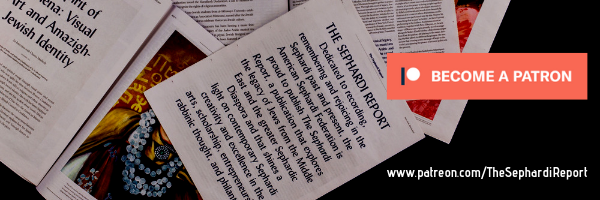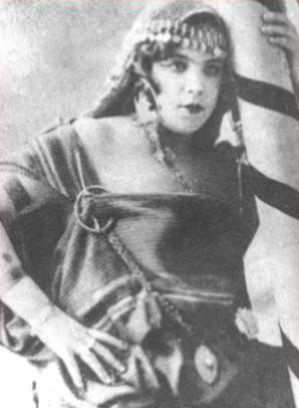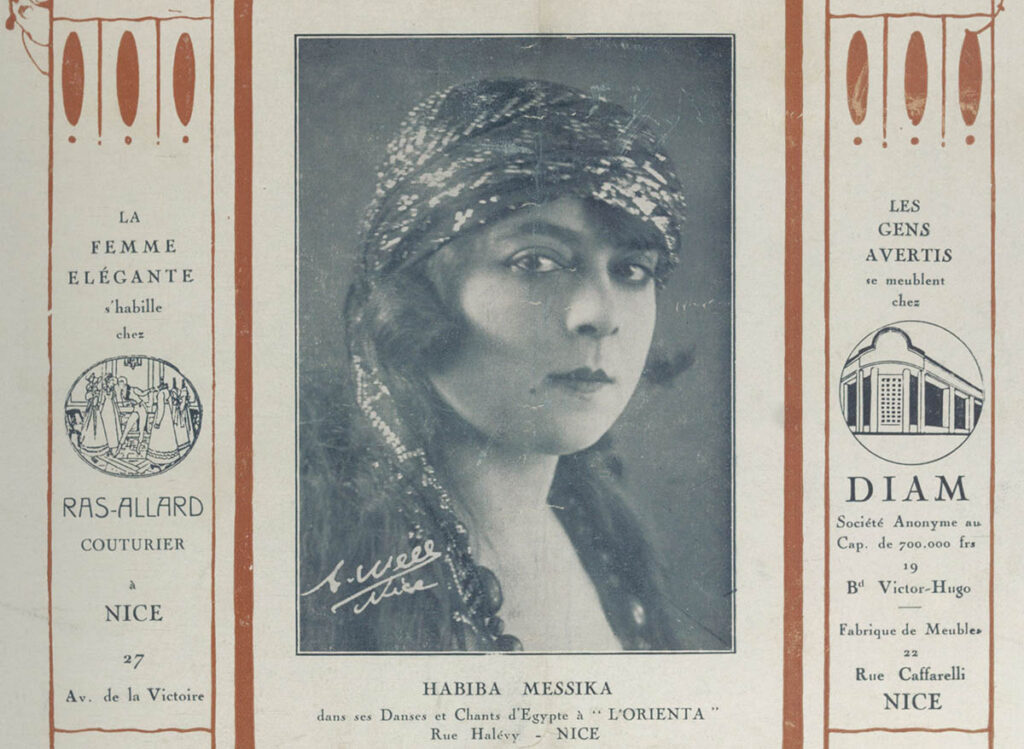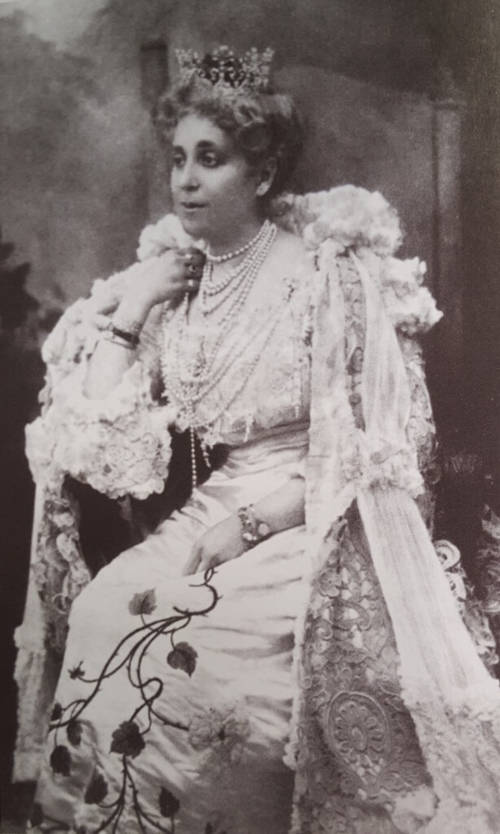Habiba Messika: North Africa’s First Superstar

In Memory of Ceil Ashkenazie, A”H, (1922-2018), sister, mother, grandmother, great-grandmother, aunt, and friend. A do-er and a helper, always with a smile. 9 September 2019
Click here to dedicate a future issue in honor or memory of a loved one.

The Sephardi Ideas Monthly is made possible by generous readers like you. Now there is a new way to show your support. Become a Patron of the Sephardi Ideas Monthly via Patreon and your name will appear in each edition along with essays and interviews from the rich, multi-dimensional world of Sephardi thought. Thanking you in advance!

Sephardi Ideas Monthly is a continuing series of essays and interviews from the rich, multi-dimensional world of Sephardi thought that is delivered to your inbox on the second Monday of every month.
For the month of August, Sephardi Ideas Monthly featured Hisham Aidi’s portrait of Jacques Muyal, the Tangier-born, Jewish music enthusiast who grew up to be “one of the most enigmatic and influential figures in the world of jazz.” This month, we continue to explore the intersection between Jews, North Africa, and musical culture with the little-known story of Habiba Messika (1903-1930), the Tunisian Jewish actress and singer, whose skyrocketing career came to a tragic end at the age of twenty-seven. Curiously, her influence on various forms of Arab nationalism increased after her passing. Messika’s extraordinary tale is narrated by a pioneering scholar and gifted writer, Chris Silver, in his 2018 History Today essay, “The Life and Death of North Africa’s First Superstar.”
Chris Silver, the Segal Family Assistant Professor in Jewish History and Culture at McGill University, recently presented at the ASF’s Institute of Jewish Experience & Association Mimouna’s “Uncommon Commonalities: Jews and Muslims of Morocco” Conference, and he is currently working on a book on Jews, music, and the Maghreb in the 20th century.
“The Life and Death of North Africa’s First Superstar”

(Photo courtesy of Koi de 9 en Israël)
Silver runs Gharamophone, an exceptional online resource that is dedicated to preserving North Africa’s Jewish musical past, a remarkable history that has largely been forgotten:
At the outset of the last century, just as the phonograph began to be widely used in Morocco, Algeria and Tunisia, a striking number of indigenous Jewish vocalists and instrumentalists, record label concessionaires, record-store owners, proprietors of cabarets and musical impresarios began to play a prominent role in the production of Arab music… By the outbreak of the First World War – when recording around the world ground to a halt – a half dozen labels operating in the Maghreb boasted deep catalogues of mostly Jewish artists performing Arab music.
What caused the 20th century history of Jewish artists performing Arab music to be overlooked? One of the main reasons was the rise of various forms of nationalism, Arab and Jewish, and the concomitant emergence of singular identities whose frameworks for historical reflection don’t leave room for people like Messika. Which is what makes Habiba Messika’s story so exceptional. It’s not that her Arabness and Jewishness dwelled together harmoniously. Rather, Messika, the Jewess, became a voice for Arab nationalism!
Between 1924-1930, Messika recorded a “staggering” 100 records. Silver writes, “Her voice – crisp, clear, smooth and sensual – captivated her audiences. She became known as the ‘queen of musical ecstasy’.” Now, ‘ecstasy’ is a translation of the Arabic tarab, more a concept than a term and without any equivalent in English. A.J. Racy has written a fantastic English-language book, Making Music in the Arab World: The Culture and Artistry of Tarab, in which he refers to tarab as “the merger between music and emotional transformation.” Messika’s capacity to embody and arouse tarab points to how deeply she had integrated, and been integrated into, Arabic musical culture.
But Messika’s power to arouse her audience wasn’t limited to her sensual musicality:
While she continued to make records with suggestive titles like ‘Ala sirir el nom’ (‘On my bed, spoil me’), she also recorded a number of marches dedicated to King Fuad in Egypt, King Faysal in Iraq and the Bey of Tunis, Muhammad VI, as well as anthems extolling Egypt and Syria.
Then, with her career brilliantly ascending, Habiba Messika’s life ended bizarrely, as she was murdered by an elderly Jewish fan. Her death, an abrupt and unexpected disjuncture, was not, however, the end of the story. Her funeral was “held in Tunis on 23 February 1930. By half past twelve, thousands of people had gathered on the Avenue de Londres, the main artery leading to Tunis’ Jewish quarters.”
Who attended the funeral? Jews, Muslims, and “Tunisian nationalists,” who regarded Messika as “a fellow traveler.” The crowd was so large that, as the French Protectorate’s Director of Public Security noted, “Never before in Tunisia has such a funeral taken place.” Already a cause for concern for the ruling colonial powers, after Messika’s passing:
H]er records circulated rapidly across North Africa. A French intelligence report described Messika’s shellac discs as having the potential to ‘provoke unrest in the Muslim milieu’.
And so it happened, for instance, three months later in Morocco:
French officials in Morocco began receiving urgent messages from civil controllers across the country. Messika’s records – purchased widely and listened to in communal settings like cafés – were stirring up nationalist feelings.
Messika’s records were stirring up nationalist feelings that, in relatively short order, would limit the kinds of collaborations that made Messika’s entire career possible. How are we to evaluate Messika’s brief but brilliant career?
According to Silver:
Messika’s oeuvre allows us to examine the largely overlooked North African and Middle Eastern soundscape, in which a burgeoning trade in Arabic-language records animated fans, fanned French fears of subversion and were passed from hand to hand for decades.
What’s more:
[N]arrating a history of the greater Middle East through its records challenges many of the most basic assumptions about the region’s history – of the ephemeral quality of music, of an unravelling Jewish-Muslim relationship and even of the exclusivity of emerging nationalist movements.
One can add to Silver’s reflections that Messika appeared during that brief window in time when shared secular spaces appeared across North Africa and the Middle East, shared secular spaces that made room, even in nationalist movements, for hyphenated identities. That said, the exceptional character of Messika’s career also points to the ephemeral quality of these shared secular spaces: why, across North Africa and the Middle East, did they shine so brightly yet burn out so quickly?
Sephardi Ideas Monthly is very pleased to introduce our readers to the wonderful music and thought-provokingly brilliant career of Habiba Messika with Chris Silver’s fascinating and informative essay, “The Life and Death of North Africa’s First Superstar.” Next month’s issue of Sephardi Ideas Monthly will feature an original interview with Silver that further explores the fascinating but largely forgotten 20th century history of Jewish musicians in North Africa.
Feature:

Hear Habiba Messika perform “Anti Souria Biladi” (“Syria, you are my country”) and “Ya man yahounnou,” an ode to Egypt’s King Fuad, recorded for Baidaphon at Berlin, c. 1928. Both songs contain subversive, anti-colonialist messages that made them popular with Arab nationalists. Indeed, Messika’s “Anti Souira Biladi” was “among the most sought after records of the era” and its increasing distribution “among Tunisians, Algerians, and Moroccans threw French security services into a frenzy.”

The Monthly Sage החכם החודשי
Madam Frecha-Flora Sassoon

Madam Frecha-Flora Sassoon was born in Bombay after her family emigrated from Iraq to India. Sassoon’s remarkable education included private tutors, “Baghdadi” rabbis, and enrollment at a local Catholic school. By the age of 17 she was a master of Jewish texts and seven languages.
Sassoon married in 1876 and had three children. She took over the family business when her husband passed away in 1894, and she proved to be a generous philanthropist during the plague of 1896. She was also a fierce proponent of women’s rights in a very conservative society. When Sassoon moved to England in 1901 in search of medical care for her daughter, she travelled with ten men so that she could pray with a proper quorum. She also brought along a shohet, or ritual slaughterer, so that she could always have kosher food!
When, in 1910, Sassoon visited Baghdad, she met with local sages, including Hakham Ezra Ruben Dangoor, the Chief Rabbi of Baghdad, and she read the Torah in the synagogue from a scroll that had been donated by the Sassoons.
Madam Frecha-Flora Sassoon left a lasting legacy by locating and collecting manuscripts written by Jews from across the east. Today, the Sassoon Collection is one of the most important manuscript collections in the field of Jewish Studies. After years of toil, Sassoon unsurprisingly developed into an expert in Oriental Jewish manuscripts, Midrash, and Sephardi customs and legal practices. She corresponded with leading rabbis, including the legendary Hakham Rabbi Yosef Haim (the Ben Ish Hai) on halakhic topics.
Sassoon was buried on Jerusalem’s Mount of Olives after she passed away in 1936. In the following passage from Sermon of the Great Rabbanit Madam Frecha Sassoon, published in London in 1930, Sassoon learnedly (and sardonically) asserts her love of Torah and the rights of women to lead learned assemblies:
First, I offer my deep thanks to the Beit HaMidrash L’Darshanim committee for their great honor in electing me as Chairperson of the Annual Meeting. I have been told that since the founding of this institution, it has been unheard of that a woman be honored as Chairperson. This is perhaps because it says “I have found no woman among all these”, or because you recite “Who hath not made me a woman” in your daily prayers. If so, I find it puzzling that you have honored me as Chairperson. Perhaps this is according to what it says in Tractate Kritot, page 6b, that “Once in sixty or seventy years the surplus would reach half the amount” (a reference to the Incense Offering). For, to your mind, men are the basis and principle of the human species, and woman are only the surplus, something extra and inessential. Just as the incense made of the surplus once in sixty or seventy years was legitimate, so you must have said: This Beit Midrash was founded seventy years ago, and was always chaired by men – they are the essence, and now, once in seventy years, the time has come to give the honor to a woman, one of the gender that is considered as surplus and not essential. I harbor no grudge toward you for the honor you have bestowed upon me, far from it; I rejoice that you have, once in seventy years, also honored a woman. Nevertheless, I will have you note that this fact is not a good sign…. Hear me, o teachers and pupils, I hereby reveal to you that you have not entirely erred. I am for the LORD, I love the Torah with all my soul and labor at it, and I lead my children, as well, in the way of Torah.
~~~~~~~
Donate now and your tax-deductible contribution will help ASF preserve and promote Greater Sephardi history, traditions, and culture as an integral part of the Jewish experience!

Contact us by email to learn about giving opportunities in honor or memory of loved ones.
~~~~~~~
Copyright © 2019 American Sephardi Federation, All rights reserved.
Thank you for opting (on our websites, at an event, or by email) to receive American Sephardi Federation Programming Updates and Publications. We apologize if this message was sent in error.
The American Sephardi Federation is a proud partner of the Center for Jewish History (15 West 16th St., New York, NY, 10011).
American Sephardi Federation | http://www.AmericanSephardi.org | info@americansephardi.org | (212) 294-8350